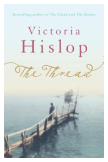August 1, 2012
As I was growing up, Mum told me her stories and as most children, I tried not to take them in – but of course something sunk in – except that the names did not always register. Mum worked for Chiver’s (her first job), then for Webster’s, a small engineering firm during the war and then she worked for Standard Telephones and Cables (STC) after the war. It was when Mum was working for STC that she met Dad, and eventually they married. The office manager had a secretary, a grey haired spinster, her name escapes me, who held the balance of power in an office where the majority were young men returning from the war and determined to find a wife. When Mum and Dad got married, she put in a word so Mum could keep her job. And the work – it was drawing up plans for radio communication stations – there were stories of building radio stations in India and the problems associated with this. Much to the secretary’s disappointment Mum left the job a few months later to have her first child.
And then the story changed. I have often wondered if my mother had watched the movie Monster Inc. For all  of a sudden, the office secretary transmuted into Roz, the slug-like clerk. And like Roz, the office secretary had a secret mission. For Mum, the secret mission was “The journey to the moon” and Mum was working on this project. For someone who used to have an open distain for all things Science Fiction, it was quite something – the later stages of the story involved Mum training to be an astronaut – but she got pregnant and that was the end of her part in the project.
of a sudden, the office secretary transmuted into Roz, the slug-like clerk. And like Roz, the office secretary had a secret mission. For Mum, the secret mission was “The journey to the moon” and Mum was working on this project. For someone who used to have an open distain for all things Science Fiction, it was quite something – the later stages of the story involved Mum training to be an astronaut – but she got pregnant and that was the end of her part in the project.
My family has learnt that dementia is a cruel and terrible disease that comes in different formats, that dementia steals the person you once knew, that Mum now has a different past, where she married as a teenager, got involved with a bank manager who stole her money, went to university, travelled the world, came from a family that mixed with royalty, and worked for august institutions such as the Royal Horticultural Society and the National Trust. It is like dealing with someone living in the world of Ashes to Ashes. The stories are coherent and facts are hammered into shape. Occasionally, as in Ashes to Ashes, real life breaks in – but is soon excluded.
We breathed a sigh of relief when Mum was no longer going to the moon, but this is a mixed blessing for now the stories are becoming thinner as the mind deteriorates. These stories , as fantastic and irritating as they are provide a fascinating glimpse of the woman that we really did not know. Today, Mum thinks of herself as a designer. A dress, and she will say she designed the fabric. A room – and she designed the building. I took her to a pub for lunch, and conspiratorially she says “I don’t supposed you will believe me when I say that I worked with two men to design this place – it was a nasty dirty place when we came here”. Some of claims of ownership and design have, I am sure, left here at odds with the other residents at the home who are a little more with it – old people, like small children can be very cruel.
The woman that I remember as Mum was competent. She was a brilliant mother and wonderful wife. When dad became a councillor, Mum was appointed a school governor a role which she kept well into her seventies. She belonged to the Townswomen’s Guild. As Dad’s work as a councillor grew in importance, Mum would often worry about clothes – what should she wear, could she be seen in the same outfit twice? These were questions that I could not comprehend – I never inhabited that world of status and appearance and convention.
Until she left school, she was an aspiring athlete. Wherever Mum was, she was popular. There had been an opportunity to go to art college, but my grandparents were living on my grandfather’s small pension, so Mum left school and started work in an office. Somewhere in these years, as the War loomed, the aspiring art and design student and athlete was replaced by Culture. Mum went to concerts with her friends, her love and patronage of classical music grew, she supported a theatre, working in backstage roles. Weekends were often spent walking in the countryside and she still swam – for fun. There were stories of swimming naked in the ladies pool at Hampstead Heath, often with illustrious personages such as Margaret Rutherford.
In all these years, we have missed the other woman that was Mum, the woman that she could have been. The creativity that was kept under control so she could fulfil the role of wife and mother, is now breaking free. The stories of “I designed this…” or even “I worked on the journey to the moon..” are the last cry of a creative, imaginative soul before the ravages of dementia claims its prize. A creative soul that we were unaware that it existed.
Tags: creativity, dementia, growing up, loss, mother, mum, my life
 scene where Lara takes some CDs of dance music from the twenties and thirties for the residents of her late aunt’s home. The music is played to these old people, many scarcely able to move, collapsing into their aged bodies. And out of this Lara sees beyond all this, the grubby reality, for she sees the spirits of these elderly people leave the Zimmer frames and decrepit bodies behind as they dance. For a while, these people were once again young and alive. Sadie was dumped in this home when she had a stroke and was unable to look after herself, forgotten by her family. Even so, the conditions of the home are light-years away from the experience of Daniel and Fermin.
scene where Lara takes some CDs of dance music from the twenties and thirties for the residents of her late aunt’s home. The music is played to these old people, many scarcely able to move, collapsing into their aged bodies. And out of this Lara sees beyond all this, the grubby reality, for she sees the spirits of these elderly people leave the Zimmer frames and decrepit bodies behind as they dance. For a while, these people were once again young and alive. Sadie was dumped in this home when she had a stroke and was unable to look after herself, forgotten by her family. Even so, the conditions of the home are light-years away from the experience of Daniel and Fermin.

 up the road from home. Now reunited with my keys, Monica and I headed back to the show for a well deserved cup of tea and as it was not raining to visit some of the stalls and gardens that we had missed due the pouring rain. One of the gardens was this one – a fantasy community garden where all the materials (or most of the materials used) are second-hand. Quite a revelation in this materialistic age. And I bought the book – and got free copy of the magazine thrown in. I did have some strange idea that I would justify buying the book because it would be a present for someone but the way it is going I am keeping it for myself!
up the road from home. Now reunited with my keys, Monica and I headed back to the show for a well deserved cup of tea and as it was not raining to visit some of the stalls and gardens that we had missed due the pouring rain. One of the gardens was this one – a fantasy community garden where all the materials (or most of the materials used) are second-hand. Quite a revelation in this materialistic age. And I bought the book – and got free copy of the magazine thrown in. I did have some strange idea that I would justify buying the book because it would be a present for someone but the way it is going I am keeping it for myself!